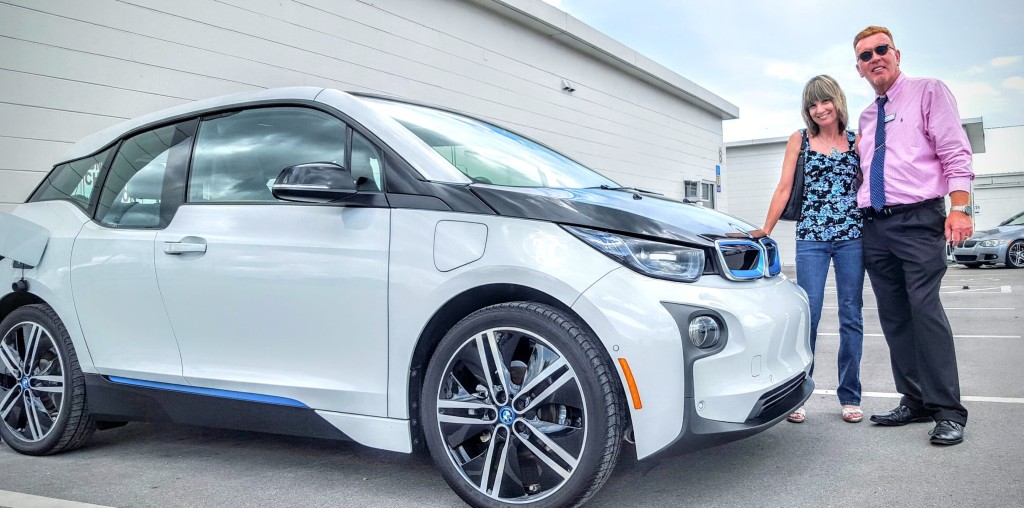Electric Vehicle Sales Graphics Rock the House

This one’s about plug-in vehicle sales, which points to a couple of interesting things:
What on Earth happened to the Mitsubishi iMiEV?? Their U.S. headquarters (near me in Los Angles) used to advertise with us when I was working with EVWord.com ca. 2008, and at one point they were going to let me have one for a year, I presume to give me incentive to continue to write good stuff about it. Next thing I know they delayed sales in the U.S., and now it’s been long since forgotten. Too bad; neat car.
The plug-in Prius PHV was a dog from the beginning. When I looked it over at the Los Angeles Auto Show in 2009, I asked the booth attendant, “It has a battery-only range of 17 miles???” You’re asking your customers to both fill it with gas and plug it in every night? Are you familiar with the word ‘nuisance?'” He explained that Toyota had asked what Prius customers most wanted, and they said better MPG equivalent, and that this car provides them exactly that. I replied that this is a marginal improvement, and that it won’t work. Guess I get to say “told ya so.”
We all had such high hopes for the Nissan Leaf. At that same car show, Carlos Ghosn made an inspired speech about his company’s commitment to electric drive-trains, that the entire audience, including me, ate up with a spoon; he got a huge ovation. What happened, IMO, is that Nissan didn’t understand something Elon Musk did: luxury. Lots of environmentalists can afford an EV that’s at the very top end of both performance and elegance.
So what happens now? More Model X? Could be. The future always looks like the past…until it looks like something different altogether.

Craig,
The reason the Mitsubishi iMev failed, as has the much better Nissan Leaf and really every EV beyond the limited success of Tesla, is simple.
The demand for EV’s in general was grossly misunderstood during the halcyon day of the ‘green boom’. These vehicles were produced as products of a political/ideological agenda based on the idea of building cars to fulfill demand that didn’t actually exist.
The Mitsubishi iMev was a horrible little car, and found few buyers.
Inadequate in every way, the iMev demonstrated the folly of car companies listening to ideologues demanding manufacturers build cars conforming to a political agenda, not genuine popular demand.
All the trendy commentators and “green” pundits demanded such inadequate vehicles, (despite not buying one themselves) based on the false notion of an urgent demand for “commuter vehicles”.
Despite $ billions invested along with massive government support in the form of subsidies, loans etc, the market responded with the same lack of enthusiasm that greets any product designed for what someone thinks the pubic “need”,in preference to consumer desire.
Tesla has been successful to a limited extent because the model S was expensive enough to allow adequate performance and attractive styling to compete with ICE vehicles. Tesla also built a fast charging network to alleviate range anxiety.
Mainstream EV’s have always suffered from the technology being inadequate to compete with ICE vehicles in a strictly competitive market place.
The modern EV was originally conceived as a response to “Peak Oil”. Once “peak oil” waned, interest in EV should also have waned, but fortunately political enthusiasm for “green” technology continued a “climate change ” awareness saw government incentives for EV technology massively increase.
Despite massive investment in battery and charging technology, and declarations of support by manufactures, EV manufacture remains reliant upon government support.
Popular support and acceptance for Hybrid technology is a different story. Thanks to Toyota’s determination, heavy investment and shrewd marketing ability, hybrid technology is well established.
The problem with EV acceptance has always been the inadequacy and high cost of the ESD unit. That’s the key to consumer acceptance.
Jaguar’s SUV styled EV vehicle named i-Pace S competes directly with the Tesla X . The UK designed Jaguar is built at the Magna Steyr factory in Graz, Austria.
The Jaguar’s price and performance will prove a problem for Tesla as the i-pace is technically superior and of better build quality.
Tesla will also compete on performance, although Jaguar limited by space to only 90w, whereas Tesla X could expand to 115W, the Jaguar’s concentric motors deliver better performance.
Jaguar Chief of Design, Ian Callum and JLR engineer Dr. Alex Michaelides have managed to achieve a WLTP-rated range of 292 miles (470 km)[14] and an EPA-rated range of 234 miles (377 km) from the 90kWh LG Chem lithium-ion battery pack.
The iPace is equipped with a single-phase AC charger, so is slow to charge without a dedicated fast charger.
In real world driving, the Jaguar loses more than 40% of range once the vehicle moves out of the city.
However, despite the obvious drawbacks, the iPace is better value, better build quality and a more refined vehicle than the California produced Tesla model X.
At $69,000 the Jaguar still seems beyond the price range for mass acceptance by “green” buyers, especially in the USA.
The Jaguar still qualifies for all government incentives, so what’s still preventing you from buying an EV ?